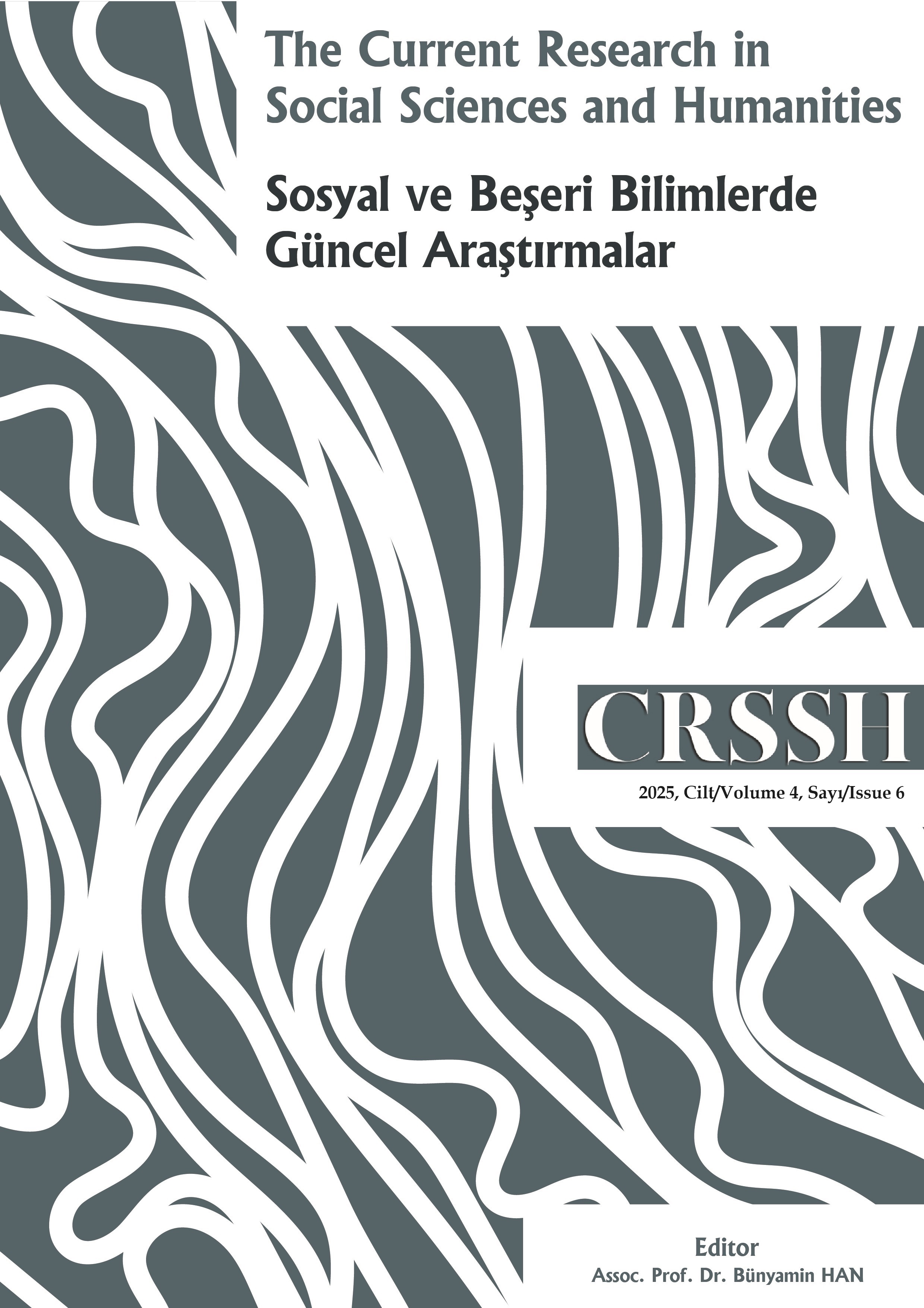Economic Feasibility and Social Development: A Complementary Relationship
DOI:
https://doi.org/10.5281/zenodo.15748084Keywords:
Anahtar Kelimeler: Ekonomik Fizibilite, Sosyal Gelişim, Sürdürülebilir Büyüme, Özel Sektör, Sosyal Etki ÖlçütleriAbstract
This study examines the integration of economic feasibility and social development as a critical approach to achieving sustainable and inclusive growth. The purpose is to explore how combining financial viability with social equity can enhance development outcomes. The research highlights the historical separation between economic and social agendas, which often results in fragmented policies and undermines long-term sustainability. Using a comprehensive literature review and analysis of existing frameworks, the study emphasizes the importance of standardized social impact metrics such as Social Life Cycle Assessment (S-LCA) and Social Return on Investment (SROI) to incorporate social outcomes into economic evaluations. Key findings reveal that social entrepreneurship and inclusive business models effectively balance profitability with social value, while innovative financing mechanisms-like blended finance and impact investing-mobilize private capital for socially beneficial projects. The study also identifies the crucial role of supportive policy frameworks, capacity building, and multi-stakeholder engagement in facilitating this integration. Furthermore, the private sector emerges as a vital partner through investment, innovation, and responsible practices, contributing significantly to sustainable development. In conclusion, the research recommends adopting a holistic, multi-actor approach that aligns economic feasibility with social development, ensuring projects are both financially sound and socially impactful. This integrated strategy fosters resilient, inclusive societies that meet present needs without compromising future generations.
References
Bilan, Y., Vasilyeva, T., Lyeonov, S., & Bagmet, K. (2019). Institutional complementarity for social and economic development. Business: Theory and Practice, 20(1), 1-12. https://doi.org/10.3846/btp.2019.10
Almansour, M., (2023). Achieving Sustainable Development: The Integration of Economic Growth, Social Well-being, and Environmental Protection. Retrieved May 18, 2025, from https://www.linkedin.com/pulse/achieving-sustainable-development-integration-growth-social-lpybf
IMD. (2025). Economic sustainability: Principles and practices for long-term success. IMD Business School. https://www.imd.org/blog/sustainability/economic-sustainability/
World Bank. (2025). Social Development: Development news, research, data. https://www.worldbank.org/en/topic/socialsustainability/overview
United Nations. (2025). World Social Report 2025: A New Policy Consensus to Accelerate Social Progress. https://desapublications.un.org/publications/world-social-report-2025-new-policy-consensus-accelerate-social-progress
CEPAL. (2025). Towards the Second World Summit for Social Development. https://www.cepal.org/en/towards-second-world-summit-social-development
Social Progress Imperative. (2024). Advancing Social Progress In 2025. https://www.socialprogress.org/post/advancing-social-progress-in-2025
OECD (2025), Global Outlook on Financing for Sustainable Development 2025: Towards a More Resilient and Inclusive Architecture, OECD Publishing, Paris, https://doi.org/10.1787/753d5368-en.
Upcycle Luxe. (2024). Sustainable Development in Action: Inspiring Case Studies. https://upcycleluxe.com/blogs/our-readers-digest/sustainable-development-in-action-inspiring-case-studies-from-around-the-world
Więckowski, J., Sałabun, W., Kizielewicz, B., Bączkiewicz, A., Shekhovtsov, A., Paradowski, B., & Wątróbski, J. (2023). Recent advances in multi-criteria decision analysis: A comprehensive review of applications and trends. International Journal of Knowledge-Based and Intelligent Engineering Systems, 27(3), 367–393. https://doi.org/10.3233/KES-230487
United Nations Environment Programme (UNEP). (2021). Guidelines for Social Life Cycle Assessment of Products and Organizations. UNEP Life Cycle Initiative. https://www.lifecycleinitiative.org/wp-content/uploads/2021/01/Guidelines-for-Social-Life-Cycle-Assessment-of-Products-and-Organizations-2020-22.1.21sml.pdf
SAI Platform. (2022). Annual Report 2022: Transformation through Collaboration. https://saiplatform.org/wpcontent/uploads/2022/05/sai_2022_report_ok_double_page.pdf
de Oliveira Paiva, L. G., Aquila, G., de Queiroz, A. R., Balestrassi, P. P., de Oliveira Pamplona, E., & Camatta, U. P. (2020). Evaluating economic feasibility and maximization of social welfare of photovoltaic projects developed for the Brazilian northeastern coast: An attribute agreement analysis. Renewable and Sustainable Energy Reviews, 130, 109948.https://doi.org/10.1016/j.rser.2020.109786
Masset, E. (2018). Integrated Development, Past and Present. In C. Barnett (Ed.), The Millennium Villages: Lessons on Evaluating Integrated Rural Development (IDS Bulletin, Vol. 49, No. 4, pp. 17–31). Institute of Development Studies. https://doi.org/10.19088/1968-2018.159
OECD. (2021). Social Impact Measurement for the Social and Solidarity Economy. OECD Publishing. https://www.oecd.org/publications/social-impact-measurement-for-the-social-and-solidarity-economy-d20a57ac-en.htm
United Nations Development Program (UNDP). (2016). Integrated Planning & Sustainable Development: Challenges and Opportunities. https://www.undp.org/sites/g/files/zskgke326/files/publications/PAGE_Integrated_Planning_and_SD_SynthesisReport.pdf
OECD. (2023). Regional Social Economy Strategies: Common Challenges and Avenues for Development. https://www.oecd.org/content/dam/oecd/en/publications/reports/2023/12/regional-social-economy-strategies_558dc0a4/cef31b9c-en.pdf
Global Impact Investing Network (GIIN). (2022). Sizing the Impact Investing Market. https://thegiin.org/publication/research/impact-investing-market-size-2022/
International Labour Organization (ILO). (2023). World Employment and Social Outlook: Trends 2023. https://www.ilo.org/sites/default/files/wcmsp5/groups/public/@dgreports/@inst/documents/publication/wcms_865387.pdf
United Nations Development Program (UNDP). (2021). Annual Report 2021.https://www.undp.org/sites/g/files/zskgke326/files/2022-05/undp-annual-report-2021-v1.pdf
Downie, A., OPEC Fund. (2024). How the Private Sector Can Advance Development. https://opecfund.org/news/how-the-private-sector-can-advance-development
Ursu, S., Development Aid. (2023). The Role of the Private Sector in Achieving Sustainable Development Goals. https://www.developmentaid.org/news-stream/post/167440/the-role-of-the-private-sector-in-achieving-sdgs
(UNGC) United Nations Global Compact . (2019). The Decade to Deliver: A Call to Business Action.
Downloads
Published
How to Cite
Issue
Section
License
Copyright (c) 2025 Current Research in Social Sciences and Humanities

This work is licensed under a Creative Commons Attribution-NonCommercial 4.0 International License.


